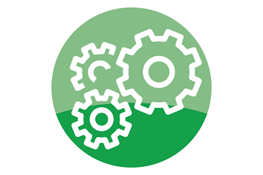In the medical device industry, every company knows the necessity of a Quality Management System (QMS) for managing internal processes and tracking work to regulatory requirements. Many companies view their QMS as a necessary burden, but we aim to convince those companies to rethink that view and see their QMS as a tool to elevate and accelerate product design and development, not hinder it. We believe a QMS can become an instrument that prevents errors (and delays) by leveraging experience during development.
I have teamed up with Velentium’s Chief Technology Officer, Randy Armstrong, to take you through how a company can adapt their QMS to a leaner, more useful model without compromising safety. During his decades of experience designing medical devices, Randy was a U.S. delegate for ISO 14708-3 (neurostimulators) on the committee that authored the original version. He also worked on ISO 14708-4 (infusion pumps), and was the co-chair for two AAMI committees, overseeing neurosurgery and TENS devices.
A valuable QMS will not impose rules without understanding on employees. Instead, it will train its users to follow sound principles for design and manufacturing. With such a QMS, companies can avoid the cultural and performance loss that comes from trapping designers and team members into narrow channels and restraining their creativity. A valuable QMS incorporates all necessary elements while tolerating diversity in approach where appropriate. Most importantly, a valuable QMS recognizes where variability is acceptable and where it is unacceptable.
One benefit of design controls is providing processes by which designs and their impacts may be analyzed from multiple perspectives to identify flaws and correct them. A valuable consequence of this is the identification of errors early in the design process (with few exceptions, the later an error is found, the more costly its impact). Another valuable return, which is insufficiently leveraged in most quality systems, is the paradoxical encouragement toward minimization, both in process and product. As the process forces us to pick up each piece and analyze it from all perspectives, it consequently forces us to simplify designs by asking ourselves “is this feature or component necessary, or is it needlessly increasing the complexity of our design?” The paradox is that while we work to reduce QMS burden, those burdens drive us to reduce device complexity, which will more often than not improve patient safety and reduce a company’s development and manufacturing costs. A valuable QMS will reduce burden while incentivizing simplicity.
Finally, as connectivity and virtualization move monolithic brick-and-mortar teams into the cloud, where multiple teams or even corporations may contribute throughout the product lifecycle, a valuable QMS will leverage common language and principles (such as those from recognized standards) without emphasizing “regional” dialects, differences, or details. This becomes a critical accelerator for distributed development.
Over the next few weeks, we will be walking you through an array of topics, such as:
- How did Velentium develop its lean QMS?
- Importance of balancing empowerment and control within a QMS
- Difference between a standard- and a product-centric QMS
- Why “simple is hard but simple is worth it” pertains to quality systems
- How and why these concepts come together
Our next blog post will examine ways to develop a lean QMS. If you’d rather not wait, click here to download our QMS white paper.
If you would like to be notified when these posts go live, please subscribe for up-to-date email alerts.









